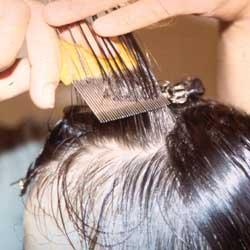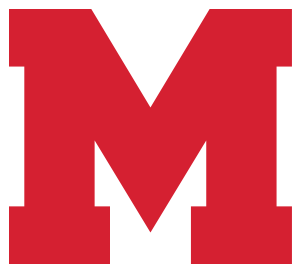Information: Lice
Please contact the school nurse if your child has head lice. All information is kept in strictest confidence. Please read the below and call or email for questions, advice.
What are head lice? Head lice are tiny insects that live only on people’s scalp and hair. They hatch from small eggs (nits) that are firmly attached to the person’s hairs near the scalp and cannot be easily moved up or down the hair (as can specks of dandruff). They look like grains of sand. Nits may be found throughout the hair but are most often located at the back of the scalp, behind the ears, and at the top of the head. The eggs hatch in about 10 days, with new lice reaching adulthood in about 2 weeks. A female louse (size of a sesame seed) can live for 20- 30 days and can lay about 6 eggs a day. Lice live by biting and sucking blood from the scalp and can survive up to 8 hrs between feedings and can do so off the body. Until a person with head lice is treated they can transmit lice to others.
How should you check for head lice? You probably will not see the lice easily, only the eggs. These are tiny, pearl-gray, oval-shaped specks attached to the hair near the scalp. Look carefully, using a magnifying glass and natural light. Search the scalp for nits, particularly at the back of the neck, behind the ears, and at the top of the head.
How does a person get head lice? Lice are transmitted during head to head contact with an infected person or sharing personal items. Lice are spread only by crawling from person to person directly or onto shared personal items, such as combs, brushes, head coverings, clothing, pillows, bedding, or towels. Lice do not fly or jump. Remind your children to be aware of their surroundings and not to share items that touch their heads like hats, headphones, helmets, headbands or hair accessories, etc.
What should you do about head lice? If your child does have head lice, your health care provider can recommend an over-the-counter or prescription treatment. All household members and anyone with close contact should be checked for lice, and anyone with live lice or nits should definitely be treated. Let the school nurse know. This is kept in strict confidence.
To get rid of head lice:
Use a product that your health care provider prescribes or recommends. Use any of these products very carefully. Consult a physician before treating infants, pregnant or nursing women, or people with extensive cuts or scratches on the head or neck.
After appropriate treatment, all nits must be removed. Removal is a difficult and time-consuming process because nits have such a firm grip on the hair. A solution of vinegar and water may help loosen nits so you can remove them with a special, fine-toothed, metal nit-removal comb.
Check for nits daily for the next 10-14 days. Repeat treatment process in 7 days to kill any newly hatched lice.
Clean personal items and surrounding:
Machine wash all washable and possibly infested items clothing, bedding and headwear in HOT water, at least 130°F (54°C). Dry them thoroughly in a HOT dryer.
Put non-washable items (furry toys or pillows) in a hot dryer for 30 minutes or dry clean them.
Seal items that cannot be washed or dried, in a tightly sealed plastic bag for at least 10 days (any eggs or lice on the items will die in this time).
Soak all combs, brushes, hair accessories in hot water [at least 130°F (54°C)] for10 minutes or wash them with a shampoo that is approved to kill lice.
Thoroughly vacuum rugs, upholstered furniture, mattresses, car seats.
Do not use insecticide sprays because they can be harmful to people and animals.
There are also Lice treatment centers where professionals remove the lice. Call for information and costs. There are many options on line. Some parents have said they have used the below. Please note there is no endorsement by the school nurse, the Melrose Public Schools or Melrose Health & Human Services Dept.
Lice Clinics of America-Woburn (operated by Lice Aunties)) 3 Baldwin Green Common - Suite 310 - Woburn, MA 01801 (617) 209-4464 https://www.liceclinicsofamerica.com/
Comb and Cure 389 Main St #403 Malden MA info@combandcure.com
Lice Happens 617-515-0051 boston@licehappems.com
When can your child return? Your child should receive treatment promptly upon discovery of lice, and nit removal is part of an effective treatment, but the Melrose Public Schools does not exclude children with lice or nits.
Combing to eliminate lice
When combing, hold the mass of hair with one hand. With the other hand, hold the lice comb in a slanting position with teeth toward the head. Combing for Lice Control-after physician endorsed shampoo/treatment.
1. Getting ready--you will need:
a fine-toothed comb designed for nit removal. It is the most effective at removing nits. Walgrens, Rite Aid, etc. sell these.
bobby pins or hair clips (for long hair)
a large towel to place around the child’s shoulders during combing
box of facial tissue
wide bowl of water with a squirt of dishwashing liquid
Note: Combing should be done in a well-lighted area. Seat the child so her/his head is just below eye level. It might be a good idea to entertain the child with reading or picture books or a dvd.
2. Preparing the hair--Cover the hair with a hair conditioner to keep the hair wet so combing is easier. Remove tangles with a regular hair comb.
3. Combing--Separate a mass of hair about the width of the metal lice comb. It is important to separate the hair into small sections so you can more easily see lice and nits.
Hold the mass of hair with one hand. Insert the lice comb as close to the scalp as possible and gently pull the comb slowly through the hair several times. Check the hair carefully. Comb one section at a time--check each section again (Figure 6). Pin the hair in a curl flat against the head. Dip the comb in the soapy water and use the tissue to remove lice and debris. Make sure the comb is clean before you use it on the hair again. Continue combing.
4. Cleaning Up--Flush contents of the bowl down the toilet. Shampoo the hair at least twice to remove conditioner. When the child’s hair is dry, check for stray nits. Remove those hairs individually with a pair of small, pointed scissors.
For effective treatment, it is important to remove all of the eggs (nits). Boil the metal comb in plain water for 15 minutes. Use an old toothbrush to clean the comb.

